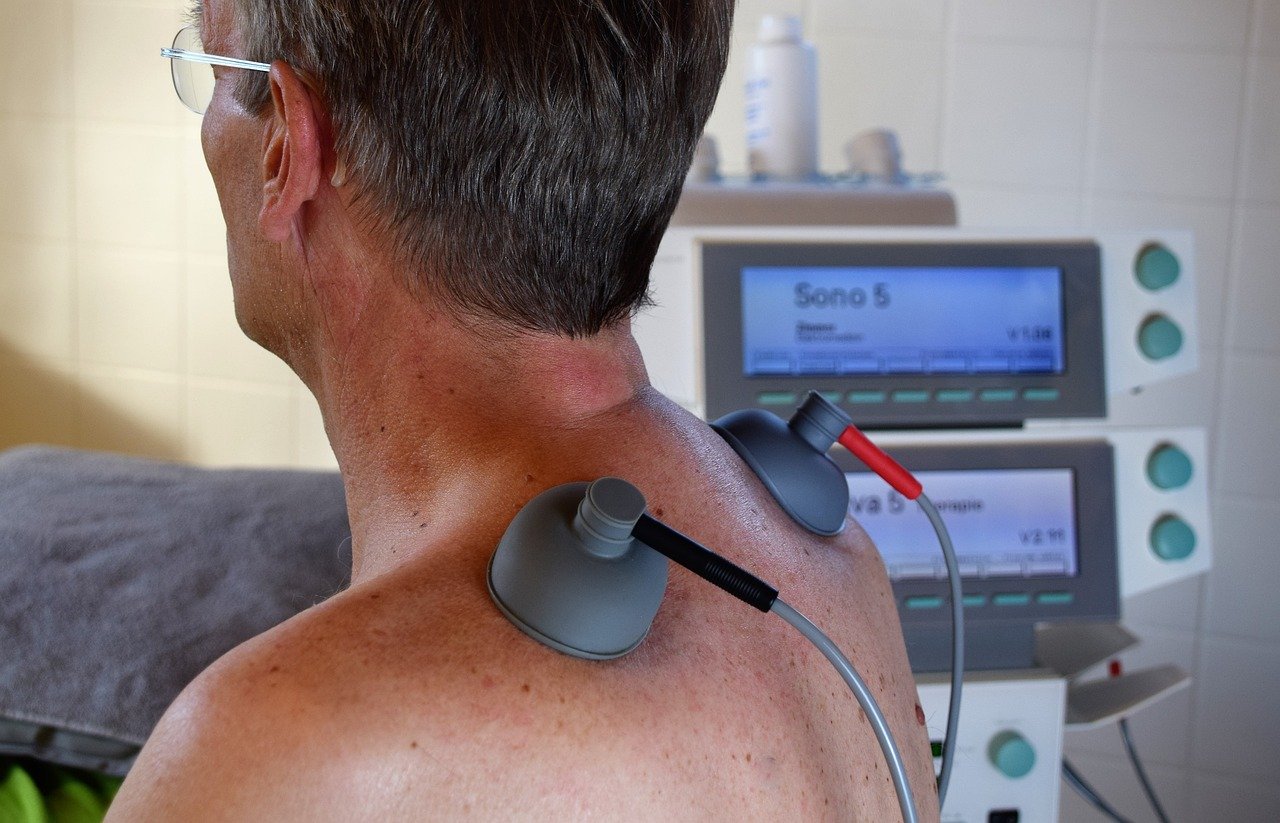
If you’ve ever woken up with a sore shoulder blade, you know how uncomfortable and frustrating it can be. The causes of this pain can vary, and understanding them is crucial in finding relief. In this article, we will explore some common causes of shoulder blade pain, such as muscle strain, poor posture, and even underlying medical conditions. By gaining insight into these potential triggers, you will be better equipped to address any discomfort and restore comfort to your daily activities.
Causes of Shoulder Blade Pain
Shoulder blade pain can be quite bothersome and affect your daily activities. Understanding the causes of this discomfort is essential in finding relief and preventing further complications. Here are some common culprits that may be causing your shoulder blade pain.
Muscle strain or tension
Muscle strain or tension is a common cause of shoulder blade pain. It occurs when the muscles in the shoulder area are overworked or stretched beyond their limits. There are a few factors that can contribute to muscle strain or tension in this area.
Overuse or repetitive motion
Engaging in activities that require repetitive arm movements, such as painting, lifting heavy objects, or playing certain sports, can put excessive strain on the muscles around the shoulder blades. Over time, this repetitive motion can lead to muscle fatigue and discomfort.
Muscle imbalance
Muscle imbalances occur when certain muscles are stronger or tighter than others. This can put extra stress on the shoulder blades and surrounding muscles. Imbalances can develop from poor posture, improper exercise techniques, or muscle weaknesses.
Muscle spasm
Muscle spasms can also cause shoulder blade pain. These involuntary contractions can be triggered by muscle strain, overuse, or underlying health conditions. Muscle spasms can result in sharp, intense pain and may limit your range of motion.

Poor posture
Maintaining good posture is crucial for the health of our musculoskeletal system, including the shoulder blades. Poor posture can contribute to shoulder blade pain in several ways.
Forward head posture
When your head juts forward, it creates strain on the muscles and ligaments in the neck, upper back, and shoulders. This forward head posture can lead to tension and discomfort in the shoulder blade area. Spending long hours hunched over a computer or looking down at your phone can contribute to this issue.
Rounded shoulders
Rounded shoulders, also known as slouching, can cause the muscles in the upper back and chest to become imbalanced. This condition can put pressure on the shoulder blades, resulting in pain and stiffness.
Sitting for extended periods
Sitting for long periods without breaks or proper ergonomics can lead to poor posture. When we slouch or maintain an unnatural position for extended periods, it can strain the muscles around the shoulder blades. This can cause pain and discomfort in the upper back and shoulder area.
Rotator cuff injuries
The rotator cuff is a group of muscles and tendons that stabilize the shoulder joint. Injuries to this area can lead to shoulder blade pain. Some common rotator cuff injuries include:
Tendinitis
Tendinitis occurs when the tendons in the rotator cuff become inflamed or irritated. This can happen due to overuse, repetitive motion, or aging. Tendinitis can cause pain in the shoulder blades, along with weakness and restricted movement.
Impingement syndrome
Impingement syndrome is characterized by the compression or pinching of the rotator cuff tendons. This can occur due to repetitive overhead activities or poor shoulder mechanics. Impingement syndrome can cause shoulder blade pain, along with weakness and difficulty raising the arm.
Rotator cuff tear
A rotator cuff tear involves the partial or complete tearing of the tendons in the rotator cuff. This type of injury can result from trauma, degenerative changes, or repetitive stress. Shoulder blade pain, weakness, and limited range of motion can be signs of a rotator cuff tear.

Nerve impingement
Nerve impingement refers to the compression or irritation of nerves in the shoulder region. This can lead to shoulder blade pain and other symptoms. Two common conditions associated with nerve impingement are:
Thoracic outlet syndrome
Thoracic outlet syndrome occurs when the blood vessels or nerves in the space between the collarbone and first rib become compressed. This compression can cause pain and other sensations in the shoulder blade area, along with numbness or tingling in the arm and hand.
Cervical radiculopathy
Cervical radiculopathy is a condition that arises from a pinched or irritated nerve in the neck. This can cause pain and other symptoms to radiate from the neck into the shoulder blade and down the arm. Numbness, weakness, and loss of reflexes may accompany this condition.
Frozen shoulder
Frozen shoulder, also known as adhesive capsulitis, is a condition characterized by pain and stiffness in the shoulder joint. This can result in shoulder blade pain and limited range of motion. Frozen shoulder typically progresses through three stages – freezing, frozen, and thawing.

Joint inflammation
Inflammation of the shoulder joint can cause pain in the shoulder blades. Some common causes of joint inflammation include:
Osteoarthritis
Osteoarthritis is a degenerative joint disease that can affect the shoulder joints. This condition occurs when the protective cartilage between the bones wears down, leading to joint pain, swelling, and stiffness. Osteoarthritis in the shoulder can contribute to shoulder blade pain.
Rheumatoid arthritis
Rheumatoid arthritis is an autoimmune disease that causes chronic inflammation in the joints, including the shoulder joints. This inflammation can lead to shoulder blade pain, along with stiffness, swelling, and reduced range of motion.
Shoulder bursitis
Shoulder bursitis refers to the inflammation of the bursae – small sacs filled with fluid that help reduce friction between tissues. When the bursae in the shoulder become inflamed, it can cause shoulder blade pain, along with swelling and tenderness.
Gallbladder disease
While less common, gallbladder disease can cause shoulder blade pain. Some gallbladder conditions that may contribute to this discomfort include:
Gallstones
Gallstones are hardened deposits that can form in the gallbladder. When these stones partially or completely block the bile duct, they can cause shoulder blade pain, among other symptoms like abdominal pain and jaundice.
Gallbladder inflammation
Inflammation of the gallbladder, known as cholecystitis, can also be a source of shoulder blade pain. This inflammation can occur due to infections, gallstones, or blockages in the bile ducts.
Heart-related conditions
Certain heart-related conditions may manifest as shoulder blade pain. It’s important to be aware of these possibilities, especially if you experience other heart-related symptoms. Some heart-related conditions that can cause shoulder blade pain include:
Heart attack
During a heart attack, referred pain can be felt in areas such as the left arm, shoulder, jaw, and even the shoulder blades. If you experience sudden, severe shoulder blade pain, along with other signs of a heart attack such as chest pain, shortness of breath, and nausea, seek immediate medical attention.
Angina
Angina is chest pain that occurs when the heart muscle does not receive enough blood and oxygen. This pain can radiate to the shoulder blades, jaw, back, or arms. If you have ongoing or recurring episodes of shoulder blade pain, especially during exertion or when experiencing stress, consult with a healthcare professional.
Pericarditis
Pericarditis refers to the inflammation of the pericardium – the sac-like membrane surrounding the heart. This condition can cause sharp, stabbing pain in the chest that may extend to the shoulder blades. Along with the pain, pericarditis can cause fever, fatigue, and a rapid heartbeat.
Lung conditions
Certain lung conditions can contribute to shoulder blade pain. It’s essential to consider these possibilities, especially if you have respiratory symptoms or a history of lung issues. Some lung conditions that may cause shoulder blade pain include:
Pneumonia
Pneumonia is an infection that inflames the air sacs in the lungs. This infection can cause shoulder blade pain, along with symptoms such as cough, fever, chest pain, and difficulty breathing.
Pleurisy
Pleurisy refers to the inflammation of the pleura – the thin membrane that covers the lungs and lines the chest cavity. The inflammation can cause sharp pain in the chest that extends to the shoulder blades. Coughing and deep breathing may worsen the pain.
Other possible causes
In addition to the previously mentioned causes, there are several other factors that might contribute to shoulder blade pain. These include:
Trauma or injury
A direct blow to the shoulder blade area or a sudden, forceful movement can result in shoulder blade pain. Fractures, dislocations, sprains, or strains can occur from falls, accidents, or sports injuries.
Shingles
Shingles is a viral infection caused by the varicella-zoster virus, the same virus that causes chickenpox. This infection can cause a painful rash that may wrap around the torso, including the shoulder blade area. The pain may be accompanied by itching, tingling, or numbness.
Stress or anxiety
Stress and anxiety can cause physical tension in the body, including the shoulder and upper back muscles. This tension can lead to shoulder blade pain and discomfort. Practice stress management techniques, such as deep breathing exercises, meditation, or seeking support from a mental health professional.
In conclusion, shoulder blade pain can have various causes, ranging from muscle strain and poor posture to underlying medical conditions. It’s important to pay attention to any persistent or severe shoulder blade pain and seek medical advice if necessary. By understanding the potential causes, you can take steps to prevent and alleviate shoulder blade pain, improving your overall well-being. Remember to listen to your body and prioritize self-care to maintain a healthy and pain-free lifestyle.





